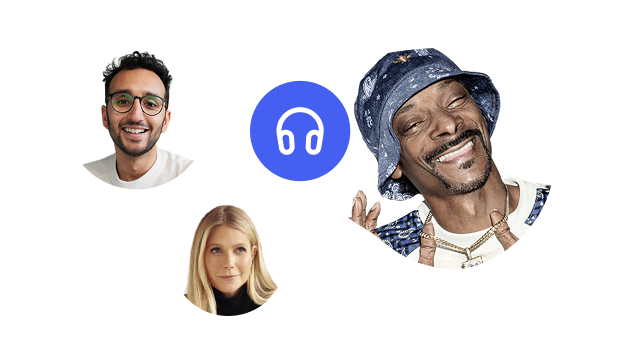Reading with dyslexia can be a daily challenge, but technology is making it easier than ever for learners to access information and enjoy reading. From text to speech readers to comprehension aids, dyslexia reading tools are designed to support decoding, focus, and retention. In this guide, we’ll explore the top digital tools that make reading more accessible and empowering for individuals with dyslexia.
Speechify
Speechify is a text to speech platform that helps users with dyslexia listen to any digital or written content in lifelike AI voices across 60+ languages. It can convert documents, PDFs, web pages, and even photos of text into audio within seconds. The app highlights each word as it’s read aloud, reinforcing word recognition and comprehension. Users can customize playback speed, choose from over 1,000 voices and sync progress across devices. Speechify’s immersive reading experience allows dyslexic learners to consume information effortlessly, turning reading into a more engaging and less stressful process.
Dragon NaturallySpeaking
Dragon NaturallySpeaking is a leading speech to text software that helps individuals with dyslexia overcome writing challenges by turning spoken words into written text with remarkable accuracy. It allows users to dictate essays, emails, or reports instead of typing, significantly reducing spelling and grammar errors. The software also includes voice commands for editing and navigation, enabling users to control their computers hands-free. Dragon’s advanced speech recognition adapts to each user’s voice and vocabulary over time, improving precision and speed. For dyslexic learners who struggle with typing or written expression, Dragon empowers them to communicate fluently and efficiently through speech.
Learning Ally
Learning Ally provides one of the largest libraries of human-narrated audiobooks specifically designed for students with dyslexia and other reading disabilities. The platform offers access to textbooks, literature, and educational materials read by trained narrators who capture tone, emotion, and emphasis—making reading more engaging and comprehensible. It also synchronizes audio with highlighted text, reinforcing word recognition and fluency. Additionally, teachers and parents can track progress through built-in analytics.
Texthelp Read&Write
Texthelp’s Read&Write is a powerful literacy support tool designed to help students with dyslexia read, write, and understand content more easily. It includes text to speech with synchronized highlighting, word prediction, picture dictionaries, and audio note-taking features. Users can adjust font styles, spacing, and background colors to reduce visual stress. The software integrates seamlessly with Google Docs, Microsoft Word, and browsers, offering assistance anywhere reading occurs. Its combination of visual, auditory, and interactive features creates an inclusive learning experience that boosts confidence.
Livescribe Smartpen
The Livescribe Smartpen combines handwriting and audio recording to help students with dyslexia capture and retain information more effectively. As users take notes on special paper, the pen simultaneously records audio, syncing it with the written text. Later, tapping on a word plays back what was said at that exact moment. This is especially helpful for students who have difficulty keeping up during lectures or remembering details. The Smartpen also connects to digital apps for storage and review, turning note-taking into a multisensory experience that enhances comprehension and organization.
Nessy
Nessy offers a suite of engaging, research-based programs designed to teach reading, spelling, and writing to children with dyslexia. Using colorful animations, humor, and gamified lessons, Nessy introduces phonics, word recognition, and language structure in a fun and stress-free way. The program adapts to each child’s learning pace, reinforcing mastery before moving on to new skills. It includes teacher and parent dashboards to track progress and suggest personalized activities. Nessy’s playful yet structured approach helps dyslexic learners build confidence while developing literacy skills through visual and interactive learning.
OpenDyslexic
OpenDyslexic is a free, open-source typeface designed to make reading easier for individuals with dyslexia. Each letter has a uniquely weighted bottom and distinctive shape to help prevent common issues like letter flipping or swapping. The font can be installed on devices or used through supported apps and browsers, improving readability across online and offline platforms. By reducing visual confusion and enhancing letter differentiation, OpenDyslexic provides a simple but powerful way to make reading more comfortable and accessible for dyslexic users of all ages.
Otter.ai
Otter.ai is an AI transcription and note-taking tool that benefits users with dyslexia by converting spoken words into accurate, readable text. It records meetings, lectures, or study sessions and generates searchable transcripts that can be reviewed later. The platform’s speaker identification, time-stamping, and keyword highlighting features help users organize and retrieve key information easily. By turning auditory input into written material, Otter.ai supports both comprehension and recall.
Genio
Genio is an AI learning platform that offers personalized reading and comprehension support for students with dyslexia and other learning challenges. It adapts reading materials to a user’s skill level, simplifying complex text and highlighting key vocabulary. The platform also provides summaries, comprehension questions, and visual cues that make reading less overwhelming. Genio’s interactive design encourages independent learning while maintaining engagement through adaptive feedback.
Ghotit Real Writer
Ghotit Real Writer is an advanced writing and reading support tool specifically designed for people with dyslexia and dysgraphia. It combines powerful grammar and spell checking with context-based corrections that standard editors often miss. The software also includes word prediction, homophone detection, and text to speech for proofreading aloud. Users can write, edit, and listen to their text within the same interface, helping them spot and understand errors in real time.
FAQ
What are the best tools for people with dyslexia?
Top tools for dyslexia include Speechify for text to speech reading, Learning Ally for human-narrated audiobooks, and Texthelp Read&Write for interactive literacy support.
How does Speechify help readers with dyslexia?
Speechify converts written or digital text into natural-sounding audio, highlighting each word as it’s read aloud to reinforce word recognition, comprehension, and focus.
Can dyslexia tools really improve reading comprehension?
Yes, dyslexia tools like Speechify and Genio combine visual and auditory learning, while Nessy and Learning Ally help users understand, retain, and enjoy what they read.
Are text to speech apps better than audiobooks for dyslexia?
They serve different purposes. Text to speech apps such as Speechify allow users to listen while following along visually, building reading fluency, while audiobooks like Learning Ally emphasize listening comprehension.
What makes Speechify different from other dyslexia tools?
Speechify offers over 1,000 lifelike voices, 60+ languages, and real-time text highlighting, making it one of the most customizable and immersive text to speech tools available.





